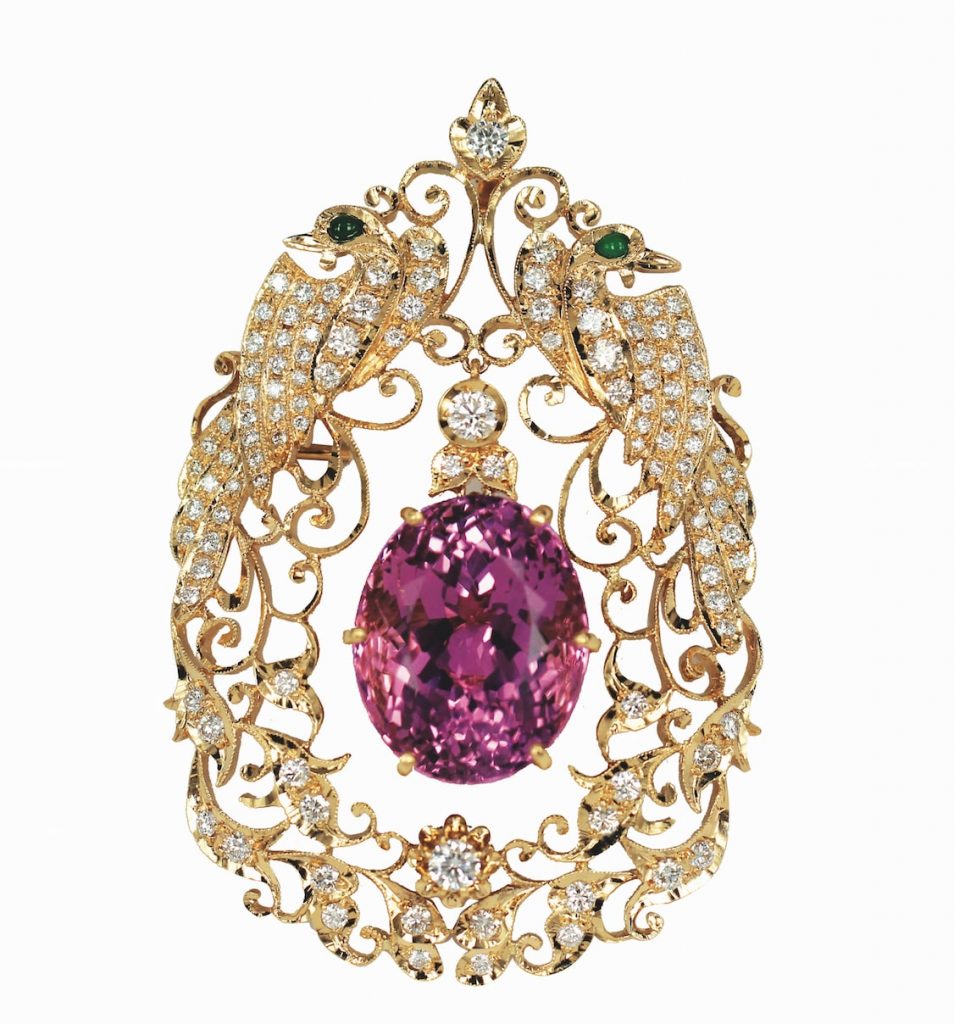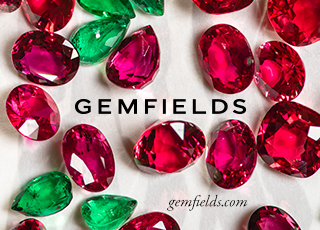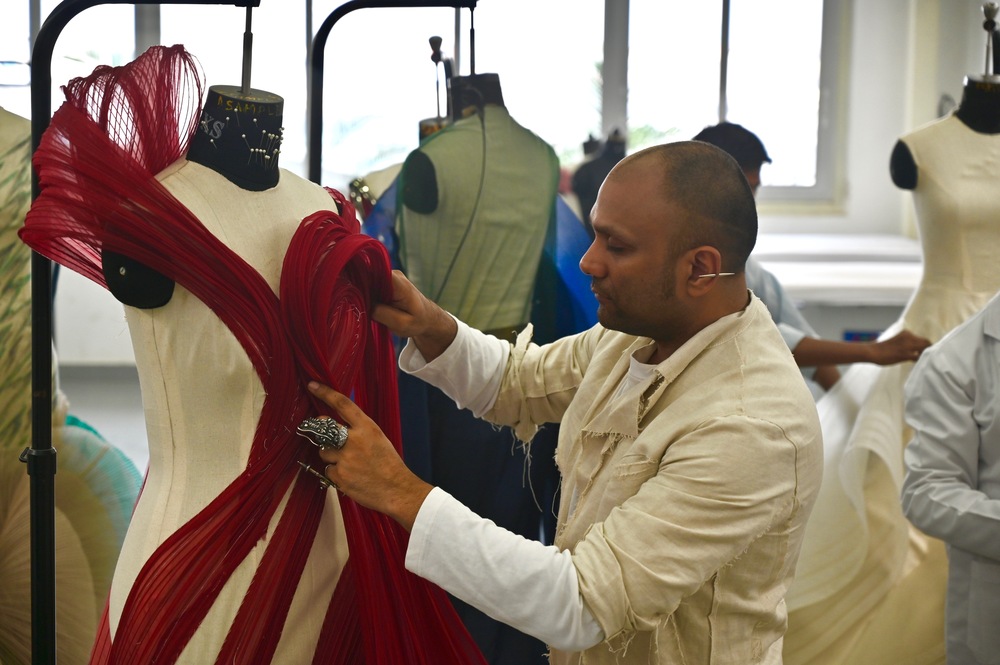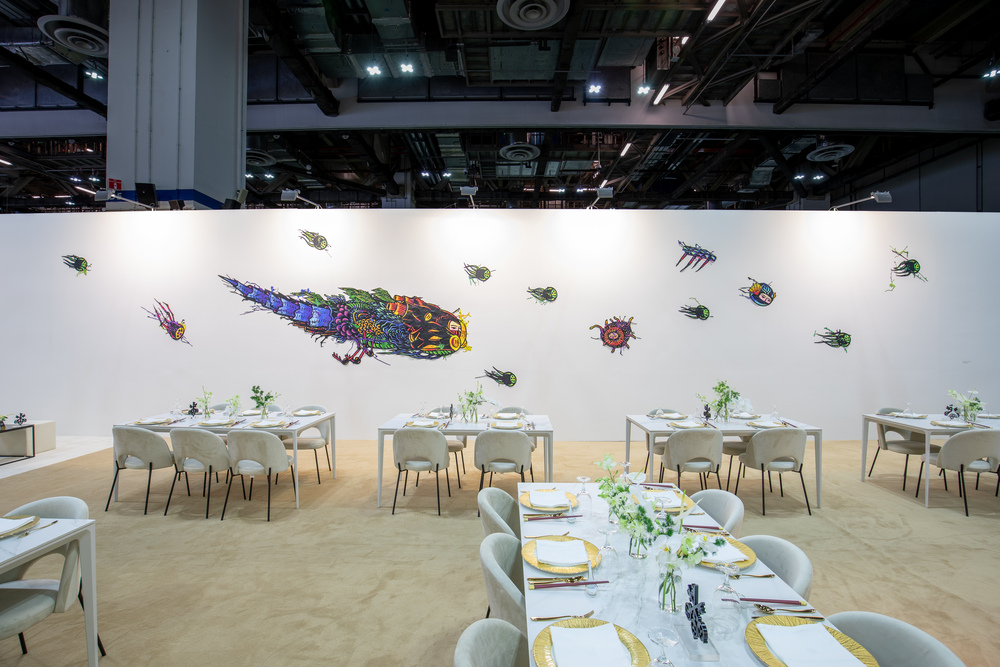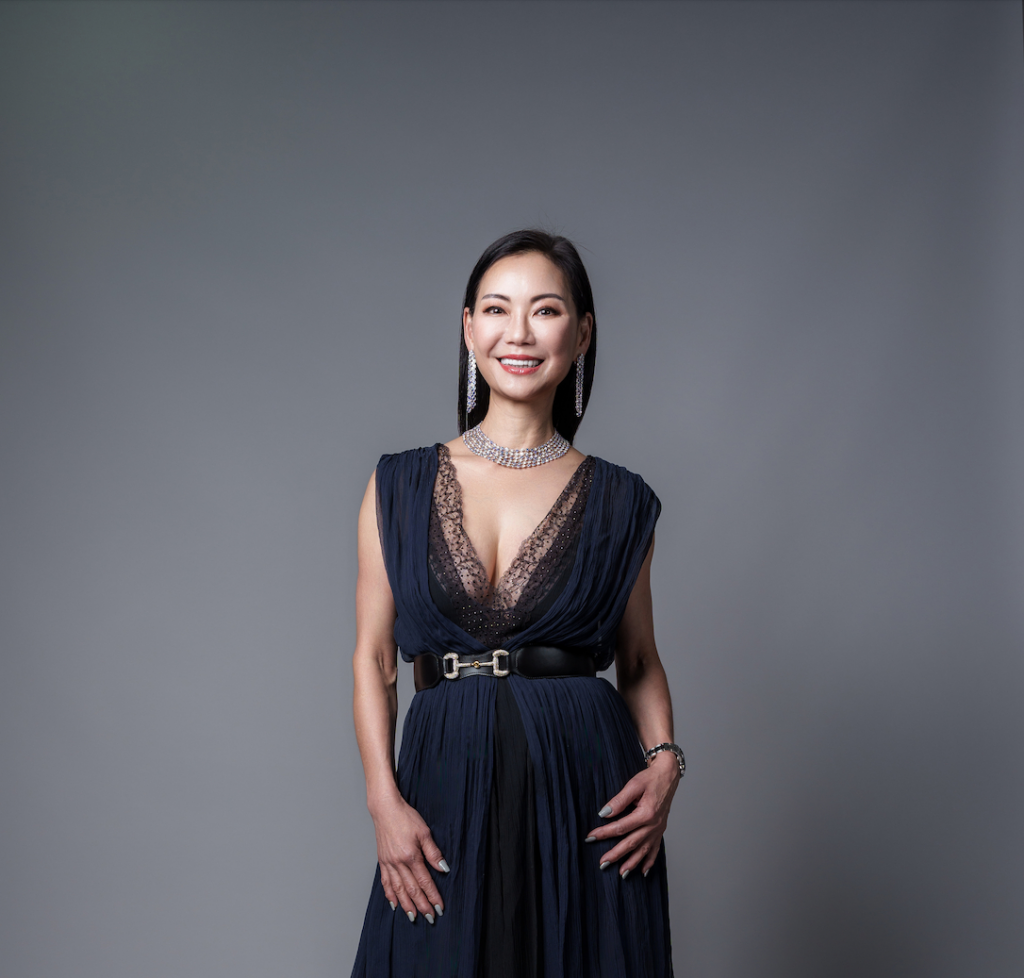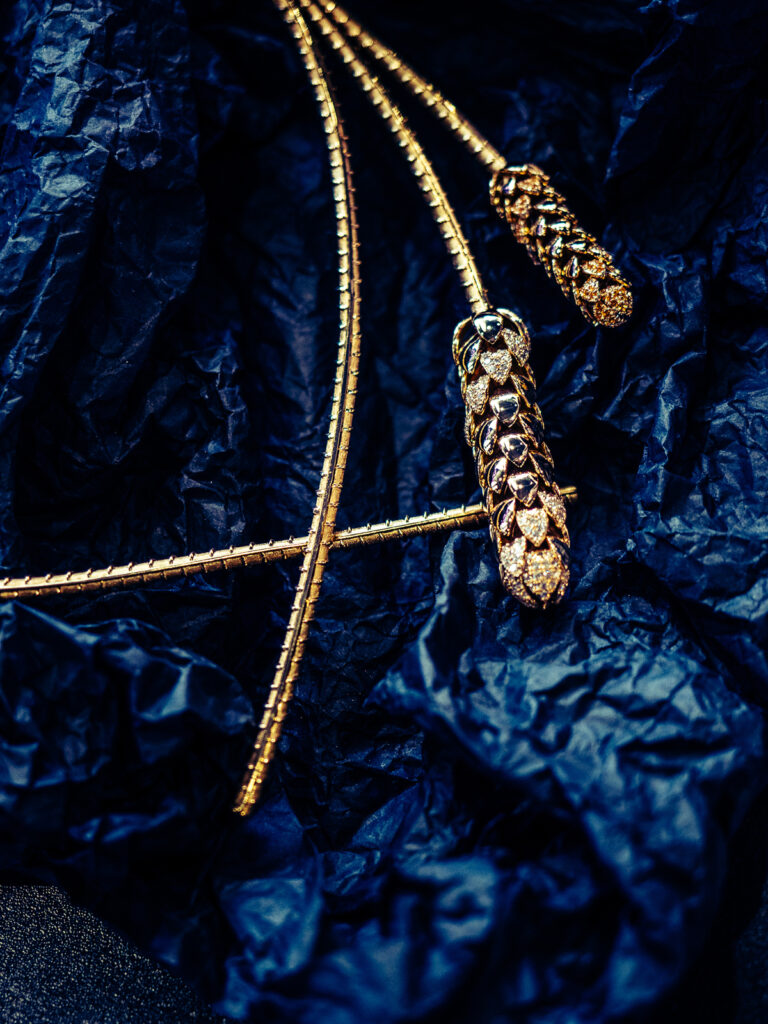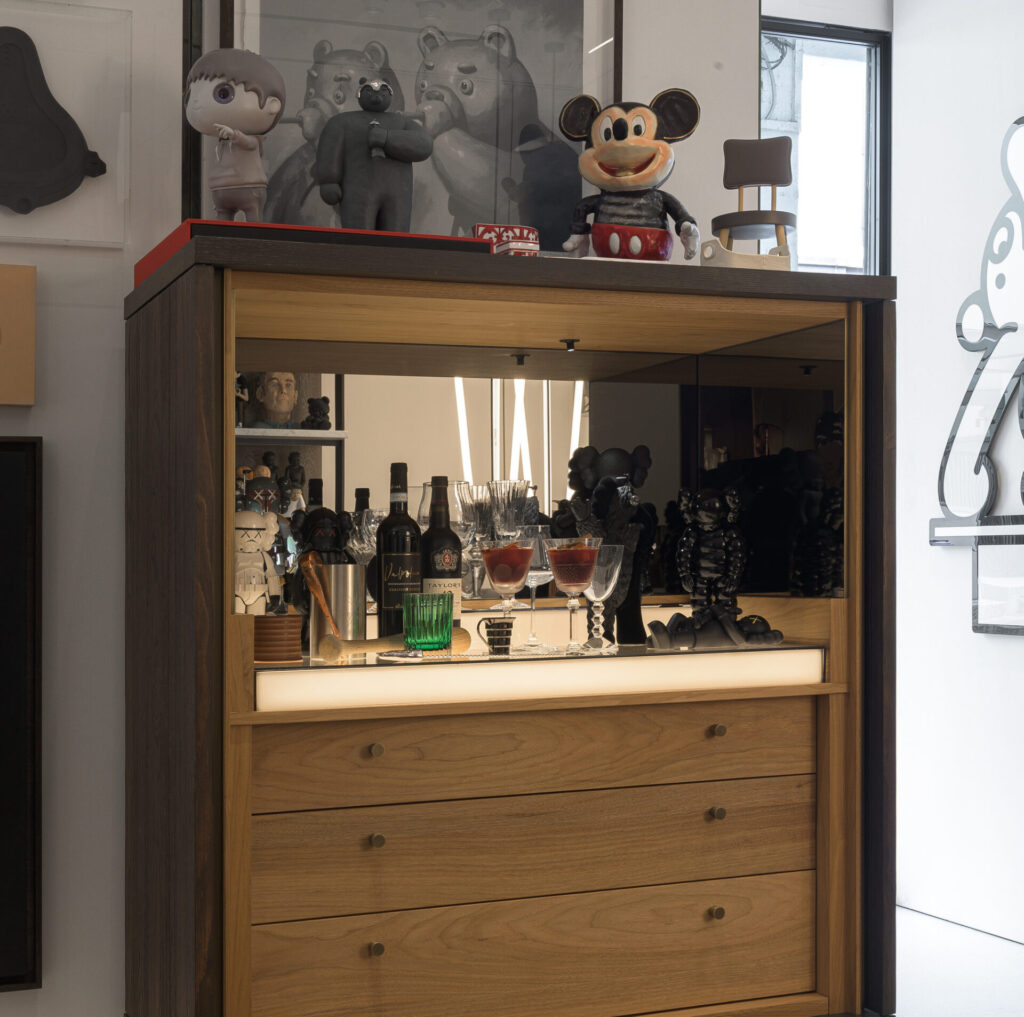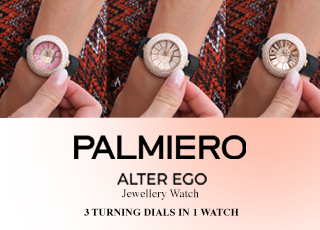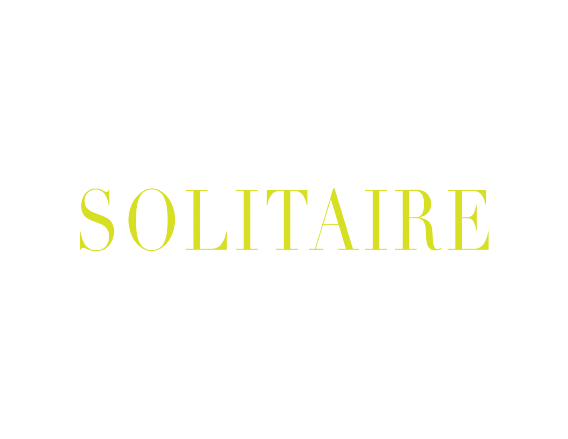INTRICATE BEAUTY
Foundation Jewellers helps spark a renewed interest in Peranakan heritage
WALKING ALONG RESIDENTIAL STREETS IN THE EAST COAST OF SINGAPORE, one cannot help but notice houses with tiles of floral and avian patterns, and painted in bright pink, yellow, green, and cyan. Many of these belong to Peranakan families, who are typically descendants from early 15th- and 17th century Chinese migrants to Singapore, Malacca, Penang, and Indonesia.

Model wearing a typical Peranakan Si Dian Jin set, which includes a necklace, earrings, bracelet and three pendants/brooches made of 18K gold with rubies and diamonds
The Si Dian Jin is a set of jewellery given by the groom’s family to the bride-to-be
Although many Peranakan families were influential during the British colonial period, their population has since dwindled due to inter-ethnic marriages. By the late 20th century, their culture appeared to be in steady decline. This changed around 15 years ago, thanks to several groups who sparked a renewed interest in Peranakan heritage. Among these was an unusual advocate — a Cantonese, non-Peranakan owner of a goldsmith shop.
This owner, Thomis Kwan, had inherited the shop from his father, who had started the business in the 1970s. The shop mainly fixed old jewellery that people brought in. It was originally located in Joo Chiat, an enclave in Singapore’s east coast with rows upon rows of Peranakan houses. The business eventually moved to Holiday Inn at Orchard, and Thomis took over from his father. In the 1990s, Singaporeans began to prefer modern jewellery that featured white gold and white diamonds. And yet, in a small corner of the shop, one craftsman remained dedicated to the restoration of heirloom pieces.
One day, Thomis saw the craftsman working on a Peranakan item and discovered that, beyond being a piece of jewellery, it was a work of art. He got the craftsman to train the other smiths in the shop and eventually pivoted the business to become a designer, maker, and restorer of Peranakan jewellery.
The business today is named Foundation Jewellers. It may sound familiar, having been propelled to international fame in 2015, when they discovered that Queen Elizabeth II had received one of their brooches as a gift from Singapore’s then-President Tony Tan Keng Yam in 2012. This news drew people from China, Taiwan, Indonesia, Cambodia, and the Philippines to visit Thomis’ shop — with some of them learning about Peranakan design for the first time.

Caroline Tay and Thomis Kwan
Popular though they may be now, Thomis and his wife Caroline, who has Peranakan roots from Penang, faced an uphill battle in trying to educate and attract customers in the 1990s. Contrary to the popular style at the time, Peranakan jewellery traditionally features yellow gold and colourful gems. It also typically references flowers, leaves, and the 12 Chinese zodiac animals. “Slowly, we found that this is not only a piece of jewellery — it’s a culture. And we wanted to save the culture,” says Caroline.
The couple gained momentum in their advocacy at the turn of the century, when they began partnering with museums, heritage associations, and magazines. The popularity of the theatrical play Emily of Emerald Hill got even more people talking about Peranakan culture. And in 2008, The Little Nyonya aired on Singaporean TV, capturing a multiracial audience and placing the culture in the spotlight. “It’s good that my husband hung on,” says Caroline, sharing that many designers had told them their idea wouldn’t work.
Even today, misconceptions about Peranakan style remain, such as the idea that it’s all “grandmother’s jewellery”. To correct this impression, Foundation Jewellers uses brilliant diamonds, instead of the traditional intan or diamond skin. They use jade, tourmaline, and rubellites to make the pieces look ‘more joyful’, in line with the culture’s style. They also create contemporary items like charm bracelets, and use a subtler shade of yellow gold to appeal to young clientele.


Peranakan necklace and earrings in flower motif made of 18K gold and diamonds
Their most popular requests include Si Dian Jin — sets of jewellery given by the groom’s family to the bride-to-be, typically comprising earrings, a necklace, bracelet or bangle, and ring. For Si Dian Jin, Foundation Jewellers creates a design based on the client’s budget. Caroline typically recommends 18K yellow gold and brilliant diamonds to mark the happy occasion, as white gold and pearls are traditionally used as mourning jewellery in the Peranakan culture.

Peranakan brooch/pendant in 18K gold with diamonds and emeralds and a rubellite centre stone
For Peranakan jewellery, the most important aspect is the workmanship. For this reason, the couple has scoured the Philippines, Hong Kong, Malaysia, and Singapore to find craftsmen with the mixture of skill, patience, and passion. Even though it is Thomis who mostly creates the designs, Caroline helps search for inspiration, especially in her travels. For instance, a recent trip to the Philippines exposed her to the intricacies of antique lace, which is prevalent in the country due to its heavy Spanish influence. She and Thomis also find ideas in antique pieces are architecture.
But it is the culture’s philosophy that really guides their aesthetics. “When it comes to Peranakan, don’t talk about jewellery, food, or design,” says Caroline. “It’s more about doing it with heart, with passion. It’s the very detail.”

